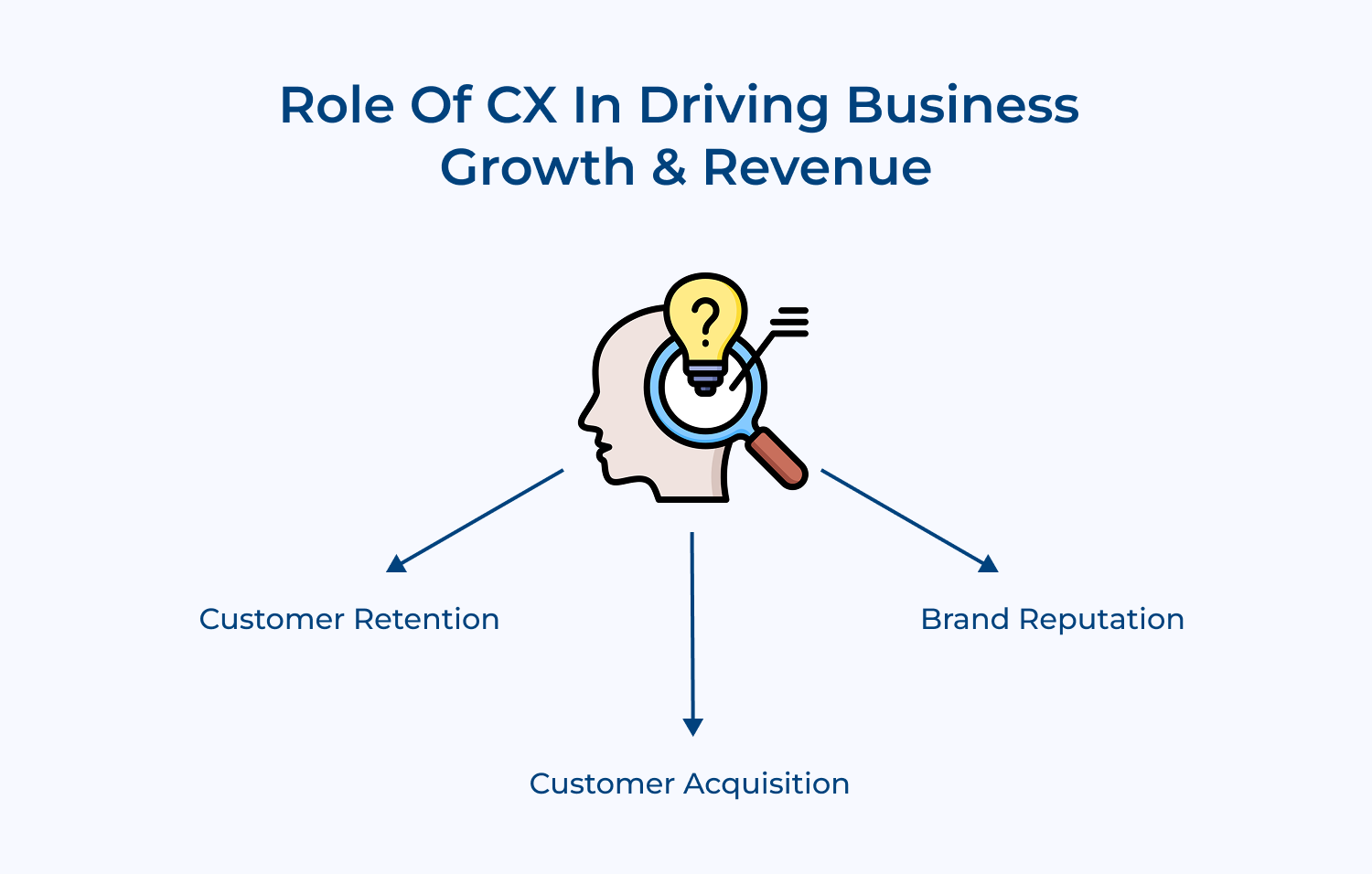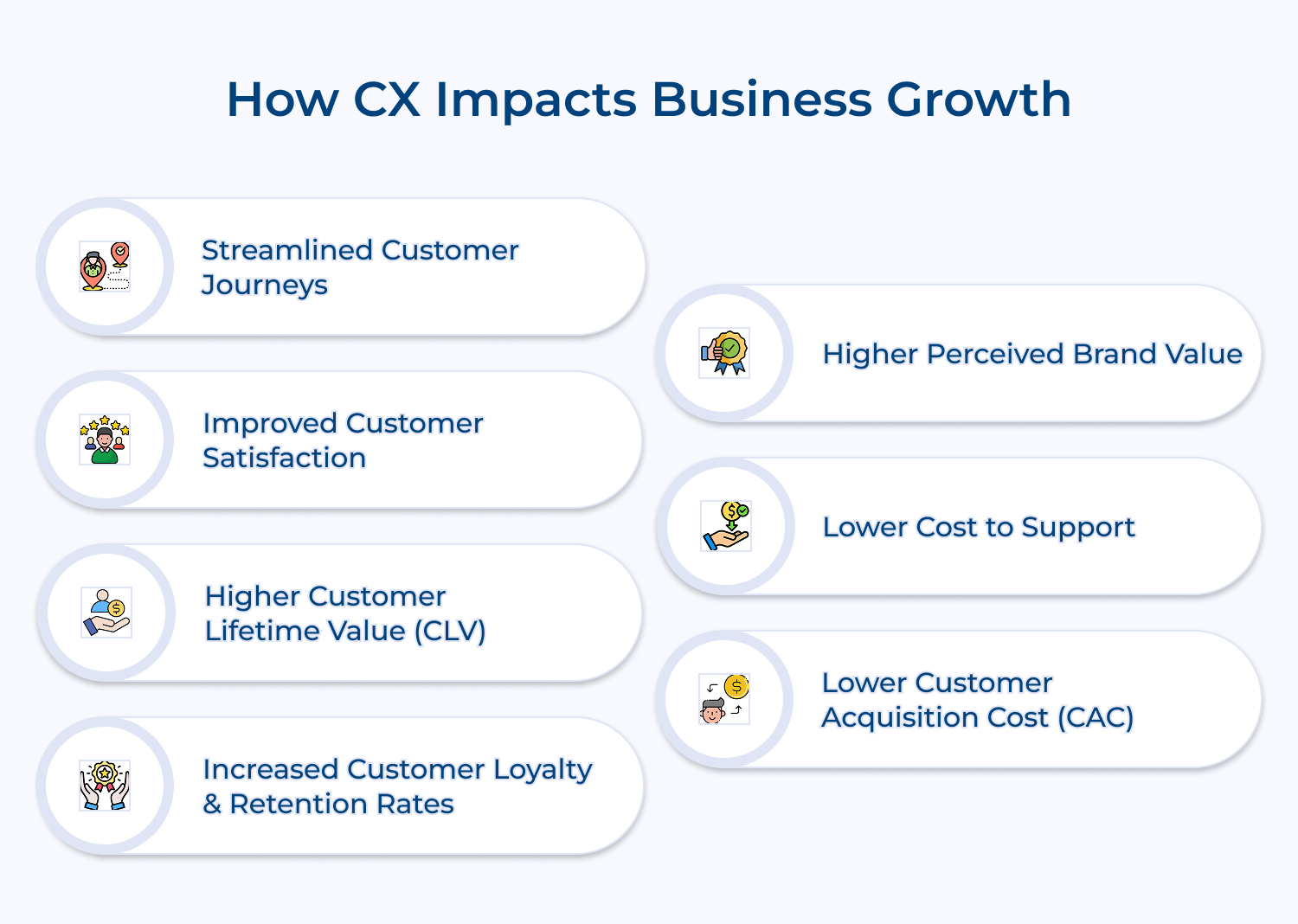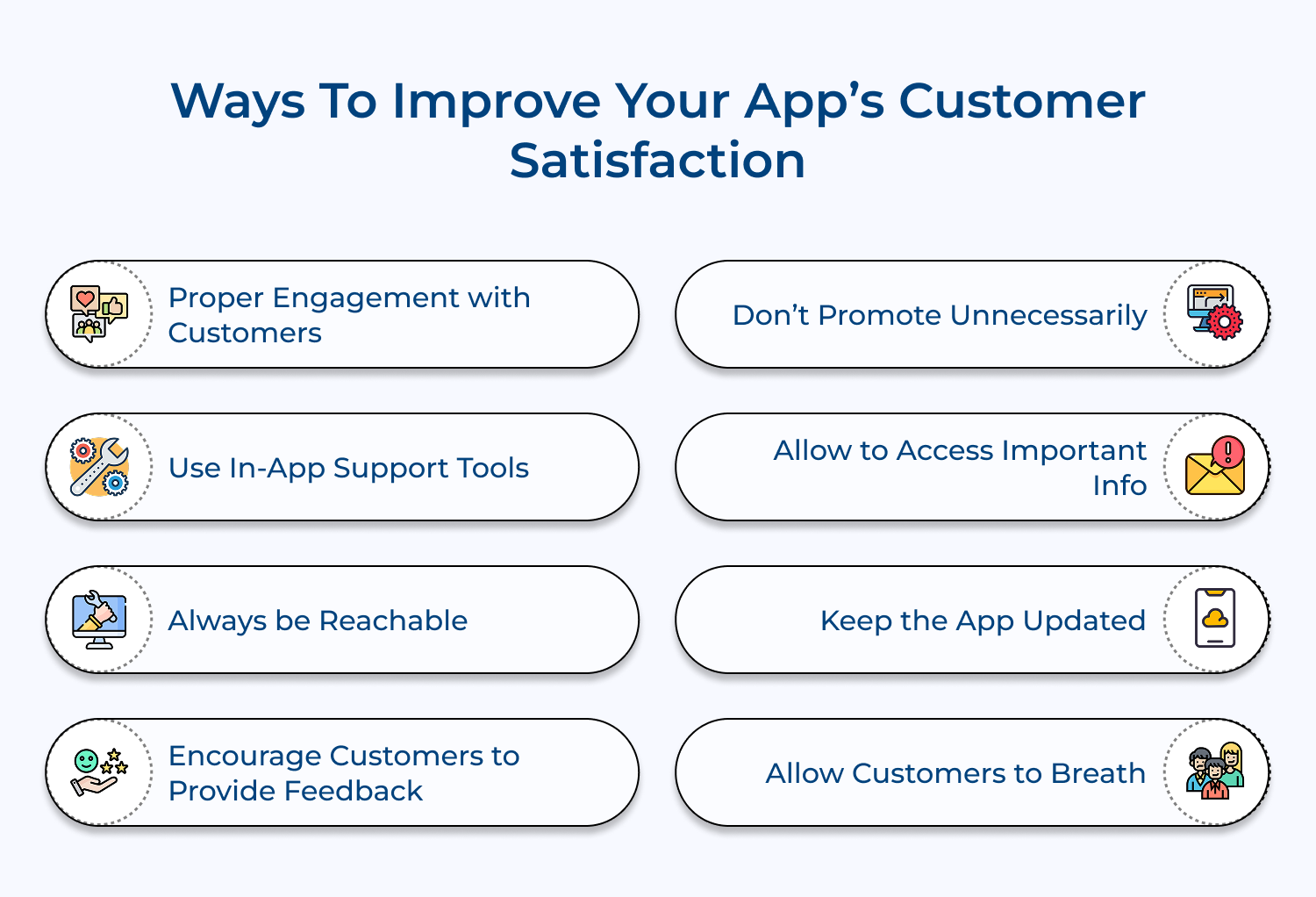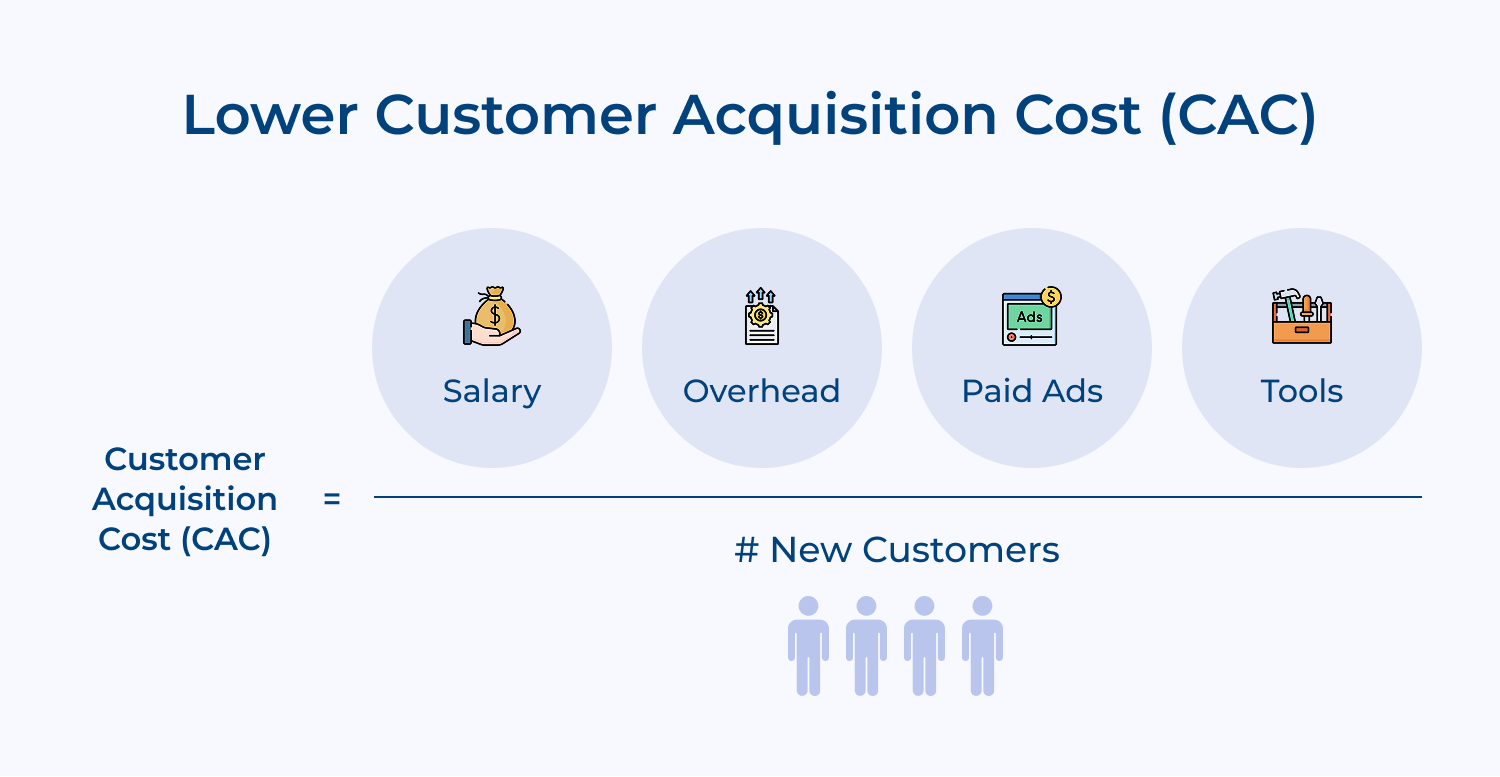- Seamless and efficient processes: Streamline customer journeys by eliminating pain points. Implement user-friendly interfaces, intuitive navigation and self-service options for faster resolution.
- Personalized and empathetic interactions: Train customer-facing teams to actively listen and provide tailored solutions. Leverage customer data & analytics to personalize communications, offers and recommendations.
- Proactive customer support and feedback loops: Implement proactive support measures, such as anticipating customer issues and providing solutions. Establish feedback loops to gather customer insights and continuously improve products/services.
3. Higher Customer Lifetime Value (CLV)
CLV represents the total revenue a customer generates throughout their relationship with a company, making it a crucial metric for long-term profitability
Satisfied customers are more likely to stick to a brand, make repeat purchases and recommend it to others. Implementing strategies to enhance CX is therefore essential for maximizing CLV and driving revenue growth.
Here are three different ways or use cases to consider:
- Personalization: Leverage customer data & analytics to tailor experiences to individual preferences and needs. Offer personalized recommendations, customized communication and tailored product/service offerings.
- Maintaining consistency: Ensure a seamless experience across all touchpoints, including in-store, online, mobile and customer support channels. Provide consistent brand messaging, product information and service levels across all platforms.
- Proactive customer support: Implement proactive support measures, such as anticipating customer issues and providing solutions. Leverage chatbots, self-service portals and predictive analytics to identify potential pain points.
4. Increased Customer Loyalty & Retention Rates
When customers have a positive experience with a company, they are more likely to become repeat customers, refer friends & family and spend more money with that business.
Here’s why customer experience is important and how it can be implemented effectively:
- Customer loyalty: Providing excellent customer experiences helps businesses build strong relationships with their customers, leading to increased loyalty and repeat business.
- Retention rates: Satisfied customers are more likely to continue doing business with a company, reducing churn rates and increasing overall revenue.
- Positive word-of-mouth: Happy customers are more likely to recommend a business to others, leading to organic growth and increased customer acquisition.
5. Higher Perceived Brand Value
Customer experience (CX) impacts revenue and business growth. One of the key ways CX influences these aspects is through higher perceived brand value and brand positioning.
It is important to prioritize CX because satisfied customers are more likely to become repeat customers and brand advocates. When customers have a positive experience with a company, they are more likely to trust the brand, refer it to others and continue doing business with it.
Implementing CX effectively can be done in various ways, including:
- Seamless omnichannel experience: Creating a seamless experience across all channels – such as website, social media & brick-and-mortar stores – ensures a consistent brand message and customer journey.
- Proactive issue resolution: Anticipating and addressing customer issues before they become problems helps companies can show their dedication to customer satisfaction. Proactive communication and resolution of customer complaints not only improve the overall experience but also demonstrate the brand’s commitment to customer success.
6. Lower Cost to Support
Customer experience (CX) is not just about providing good customer service, but about creating a positive and seamless journey for customers that leads to increased loyalty, advocacy.
Implementing lower cost to support through customer experience can be done in several ways:
- Personalized self-service options: Investing in self-service options such as chatbots, FAQ pages and online support portals helps companies empower customers to find answers to their questions on their own.
- Streamlined processes and systems: Optimizing internal processes and systems to ensure a smooth customer experience helps companies reduce the likelihood of errors, delays and issues that require customer support intervention.
7. Lower Customer Acquisition Cost (CAC)
Customer experience (CX) plays a crucial role in impacting revenue and business growth.
Having a strong CX strategy in place can attract new customers more efficiently and effectively.
When customers have a positive experience with a brand, they are more likely to refer others and share their positive experiences online, leading to word-of-mouth referrals.








